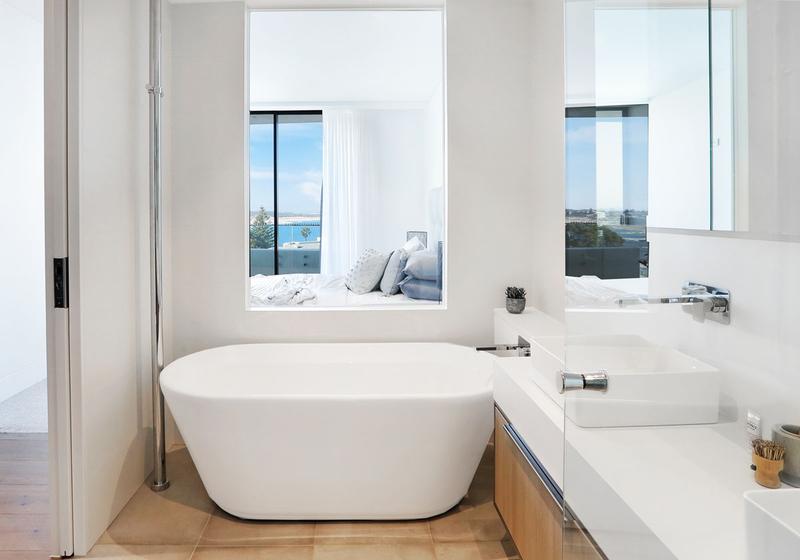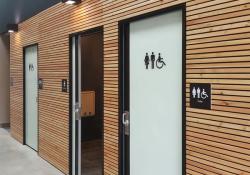
Tiling onto Standard Size Cavity Sliders
Standard CS Cavity Sliders can be used for installation into bathrooms where a tiled wall is required. In many cases, a ply panel is not necessary. Once set, the tiles will strengthen the wall of the cavity pocket, so it is important to ensure that the jambs are well clear of the door before tiling. All CS Cavity Sliders are supplied with a Jamb Spreader for this purpose. Simply insert the jamb spreader into the front of the pocket while wall linings are being applied. For non-standard cavity sliders, wedges can also be used during installation.
It is important to ensure correct installation procedure is followed and a suitable tile substrate, e.g. Villaboard, is fixed to the cavity pocket. Care should be taken to ensure the cavity wall is correctly waterproofed.
Cavity Sliders with Ply Panels
CS Cavity Sliders can be configured to include a half or full sheet of ply panel in place of nogs on one side of the pocket. This is useful for situations where additional fixing is required on the wall where the cavity pocket is located, for example if a grab rail or towel rail is to be fitted in a bathroom.
For heavy tiles or if the cavity pocket is to form part of the shower enclosure it is recommended that the cavity pocket is manufactured with a 17mm H3.1 sheet of plywood in the frame. Double lining the cavity pocket with suitable wall board and tile substrate will also provide additional protection.
CS Cavity Sliders with ply panels have been tested to meet the requirements of AS 1720.1, 2010 and support a load of up to 50kg/m2. Installation of all components must be as per the manufacturer’s instructions to be compliant.
Read more about using cavity sliders in bathrooms
How to Specify (example)
- Product: ~ CS Cavity Slider
- Location: ~ Bathroom
- Door leaf dimensions: ~ 2400 x 860
- Door type & finish: ~ Paint quality, flush
- Single or Bi-Parting: ~ Single
- Jamb type & finish: ~ Pine Grooved
- Framing size & material: ~ 90mm timber framing
- Ply panel: ~ 17mm H3.1 Full sheet - LHS of pocket
- Wall lining thickness: ~ 10mm
- Handle type: ~ CL400 Privacy Snib LH, Satin Chrome


